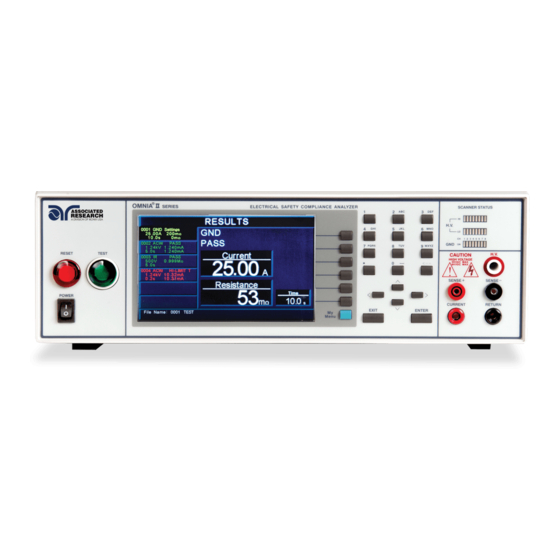Table of Contents
Advertisement
Quick Links
AC/DC HIPOT WITH INSULATION RESISTANCE TESTER, GROUND BOND, AND
825x INCLUDES 500VA OUTPUT CAPABILITY
82x6 INCLUDES RUN TEST AND LEAKAGE CURRENT TEST
82x7 INCLUDES 500VA AC POWER SOURCE
OPERATION AND SERVICE MANUAL
OMNIA II models 8204/8254
OMNIA II models 8206/8256
OMNIA II models 8207/8257
Electrical Safety Compliance Analyzer
CONTINUITY TESTER
SERIAL NUMBER
Item 39334 Ver 3.21
January 4
Associated Research
28105 North Keith Drive - Lake Forest, IL 60045 USA
T. 1-847-367-4077 F. 1-847-367-4080
info@arisafety.com
th
, 2021
www.arisafety.com
Advertisement
Table of Contents















Need help?
Do you have a question about the OMNIA II 8204 and is the answer not in the manual?
Questions and answers